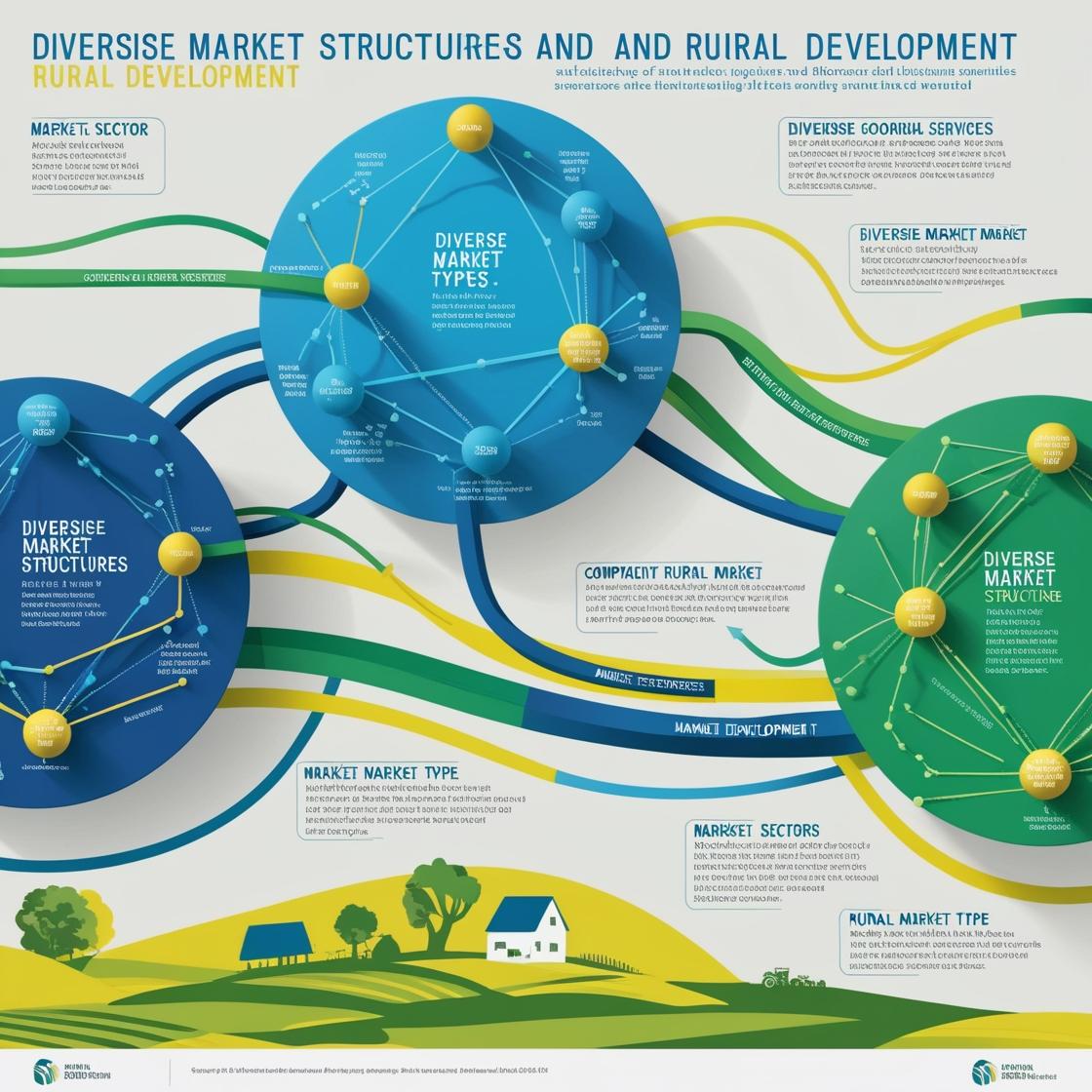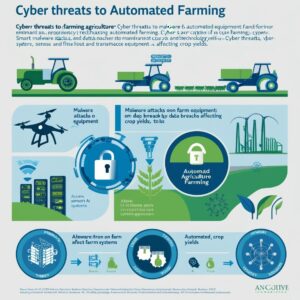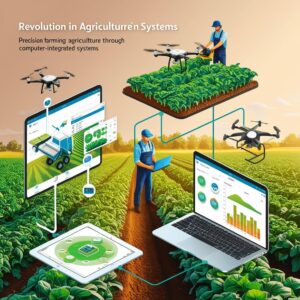Markets are more than just places where buyers and sellers meet. They’re complex systems shaped by a multitude of factors—how goods move, who’s involved, and the rules that govern transactions. This article takes a deep dive into these intricate systems, unraveling how different markets operate, interact, and impact rural development. Ready to see markets in a new light? Let’s go!
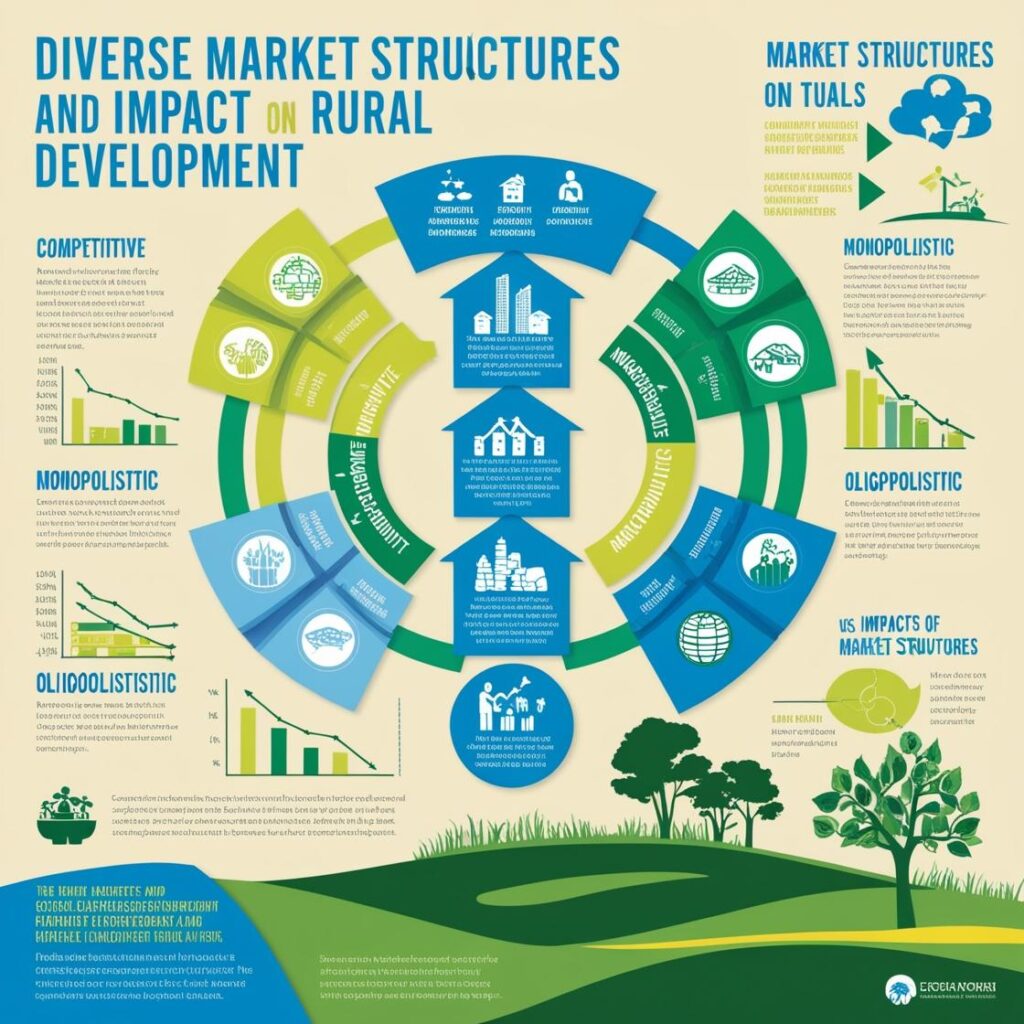
The Market as a Self-Regulating System: What Does It Mean?
When we talk about the “market,” we often think of a place where supply meets demand, resulting in a price that satisfies both sellers and buyers. This is known as a self-regulating system where equilibrium is achieved naturally. However, the market isn’t just an abstract concept. It’s also a tangible entity made up of different marketplaces, each with its own characteristics.
Multiplicity of Markets: Not One Size Fits All
In any given location, markets aren’t just a single entity but a collection of varied forms. This doesn’t just mean physical markets in separate places, like weekly village markets or urban trading hubs. The idea of market multiplicity goes deeper—markets can exist side by side, organized in different ways. Think about it like this: in one city, you could have a bustling farmer’s market, high-end supermarkets, and roadside vendors, all serving different purposes, with different rules, and targeting different customer segments.
Actionable Tip: When engaging in rural development, understand the different market channels available and which ones are most relevant to your products. This understanding will help you align your marketing strategies and pricing more effectively.
Identifying and Understanding Nested Markets
Nested markets are interconnected systems where products flow from production to consumption, involving multiple stages and actors. To grasp how these markets work, ask yourself these five key questions:
- What Makes the Product Unique? Every product has its own story—where it’s made, who makes it, and under what conditions. Whether these details are highlighted (as in a brand) or not, they influence how the product is perceived and its place in the market.
- How Does the Product Travel? Understanding the journey of a product from farm to table is essential. How many stages does it pass through? Who handles it at each stage? Are these places interchangeable, and what kind of transformations does the product undergo along the way?
- Who’s Involved? Identify the people and enterprises that make the market flow. What are their roles—wholesalers, transporters, retailers? Who’s in charge, and how is control maintained?
- What Rules Govern the Market? Markets aren’t free-for-all zones. They operate under formal and informal rules. Is the state involved, or do other institutions play a role? Understanding these rules helps in navigating and potentially influencing the market.
- Where Does the Market Fit in the Bigger Picture? Finally, consider the market’s broader context. Are these channels complementary or competitive? Do they cater to local needs or operate on a global scale?
Actionable Tip: Use these questions to assess your local market or supply chain. Knowing the answers can help you pinpoint opportunities for better market positioning or highlight inefficiencies that need addressing.
Patterns of Provision: The Case of Eggs in Dar es Salaam
Let’s take an example from a study by Marc Wegerif on egg provision in Dar es Salaam, Tanzania. Here’s a glimpse into how something as simple as an egg moves through multiple market channels, each with distinct patterns of provision:
- Dukas (Small Shops): Eggs are brought from nearby villages by cyclists and sold in small, local shops called dukas. These shops are just a stone’s throw away from consumers and often offer flexible purchasing options, like small quantities or short-term credit.
- Home Sellers: Women transport eggs from the villages to their homes via bus and sell them directly, offering a similar price range as the dukas.
- Street Vendors and Chips Sellers: These sellers cook and sell eggs along with chips, catering to consumers looking for ready-to-eat options.
- Door-to-Door Traders: Traders sell full trays of eggs, generally sourced from peri-urban producers, at slightly higher prices.
- Supermarkets: Supermarkets stock eggs from large-scale producers, including imports. They attract a different clientele and offer the highest prices.
- People’s Market: This market caters to small businesses and individuals. Eggs come from large farms situated further away and are sold in bulk at lower prices.
Each channel has its own pricing, distribution network, and set of rules. Together, they form a web of interconnected, yet distinct, markets operating within the same city.
Actionable Tip: When selling a product, explore the different channels available. Small shops may offer immediate access to local consumers, while supermarkets might reach higher-income groups. Tailor your distribution strategy based on where your product fits best.
Territorial and Peasant Markets: Building Local Economies
Some markets are territorial, linking local production with local consumption. They create a self-sustaining ecosystem where value remains within the region, supporting local economic growth. Peasant markets are a subset of these, emphasizing sustainable, small-scale agriculture. In these markets, mutual understanding and solidarity between producers and consumers are crucial.
Actionable Tip: If you’re involved in sustainable agriculture or local food systems, look for opportunities to participate in or create territorial markets. Highlight the local, sustainable, and community-driven nature of your products to attract conscious consumers.
Creating New Markets: A Response to Market Failures
The creation of new markets is often a response to existing market failures. For example, if large-scale supermarkets squeeze local producers with low prices, smaller, community-driven markets can offer an alternative, allowing producers to retain more value. These new markets might appear contradictory but serve as vital mechanisms for economic resilience and diversity.
Actionable Tip: Don’t shy away from creating new market channels if the existing ones don’t serve your needs. A well-organized farmer’s market or community-supported agriculture (CSA) model could be the key to retaining more value and reaching a supportive customer base.
Wrapping It Up: Understanding the Market Beyond Surface-Level Transactions
Markets are multi-layered systems. By understanding their complexities—the actors involved, the rules governing them, and their broader socio-economic impacts—you can navigate them more effectively. Whether you’re a farmer, trader, or policy-maker, this deeper insight will help you identify the best channels, avoid common pitfalls, and, ultimately, construct markets that work for everyone involved.
Markets aren’t just about buying and selling; they’re about building communities, supporting livelihoods, and shaping the future of rural development. And with the right knowledge, you can be a part of that positive change.
The excerpt describes the concept of socio-material infrastructures, which are complex systems consisting of interconnected social actors (such as farmers, retailers, and consumers) and material artifacts (such as vehicles, shops, and distribution centers) that influence how goods, like eggs or meat, flow through different channels in rural and urban settings. Each infrastructure shapes the movement of products based on its particular configuration, analogous to how a riverbed directs water flow.
Key Points of Socio-Material Infrastructures:
- Definition and Composition:
- Socio-material infrastructures are combinations of social relationships and physical components, such as farms, shops, and logistics.
- These infrastructures can be small-scale, involving local producers, bicycles, and neighborhood stores, or large-scale, involving specialized farms, vans, and supermarkets.
- Contrasting Infrastructures:
- The text contrasts two types of socio-material infrastructures:
- One infrastructure connects small production units, low-income households, and local stores, allowing for direct and small-scale product distribution.
- The other infrastructure involves large, specialized farms and supermarkets, requiring more complex logistics, such as vans and refrigeration, to transport products.
- The text contrasts two types of socio-material infrastructures:
- Impact on Market Creation and Functioning:
- The way products flow and the rules governing their exchange create different market dynamics, leading to distinct market infrastructures.
- New markets, like those for environmental services or care provisioning, are often constructed by the state or farmers themselves and differ significantly from conventional markets.
- Country Shops in the Netherlands:
- Country shops serve as an example of a rural development initiative. Initially marginalized, these shops began to re-emerge in the 1990s, offering consumers a chance to buy directly from farms.
- The cooperation among these shops led to the creation of a new market structure with shared logistics (e.g., a refrigerated lorry) and shared sales software, demonstrating a unique socio-material infrastructure.
- The cooperative system supports diversified product offerings and improved sales, showing how new socio-material infrastructures can enhance rural market viability.
- Circular vs. Radial Infrastructures:
- The text compares the circular infrastructure of the country shops with the radial infrastructure of large retail chains.
- In the circular infrastructure, products are shared among participating shops, reducing food miles and logistical complexity.
- The radial infrastructure, used by large retailers, depends on centralized distribution centers, leading to more transport, rigidity, and vulnerability in supply chains.
- Socio-Material Infrastructure and Market Dynamics:
- The configuration of socio-material infrastructures influences not only how products move but also how value is distributed and how market relations are structured.
- For example, the longstanding market for Chianina beef in Italy depends on regional socio-material infrastructures, which include local breeders, butchers, and small provincial slaughterhouses. When local slaughterhouses were threatened with closure, the entire market was at risk, highlighting the dependence of socio-material infrastructures on specific components.
Implications for Rural Development
- The text suggests that rural development can be fostered through the creation of new socio-material infrastructures that differ from conventional ones, emphasizing localized production, cooperative marketing, and shorter supply chains.
- These infrastructures can enhance the sustainability, accessibility, and economic viability of rural markets, allowing for more resilient and diversified rural economies.
In summary, socio-material infrastructures shape the flow of products, the formation of markets, and the roles of various actors in rural and urban contexts. Their design and evolution are critical in understanding how markets function and how they can be adapted to support rural development and local economies.
The passage delves into the role and significance of new farmers’ markets within rural development processes and their distinctions from conventional commodity markets. It is structured around the main questions of political economy: Who owns what? Who does what? Who gets what? and What is done with the surpluses? (referencing Bernstein, 2010).
Key Concepts:
- Ownership and Structure:
- New farmers’ markets are characterized as a commons—a collective resource owned and controlled by producers and sometimes consumers, contrasting with commodity markets dominated by individual capital groups.
- Roles and Participation:
- Farmers in new markets are more than just suppliers of raw materials. They play multiple roles including producing, marketing, and even researching consumer feedback to refine products. This polyvalence in roles is attractive to young and educated individuals.
- Value Distribution:
- These markets ensure that a larger portion of the value added is channeled back into rural economies, supporting local farms and employment levels, in contrast to conventional markets where surpluses often benefit larger corporations.
- Surplus Management:
- The surplus in these markets can potentially spur further rural development by sustaining forms of farming that would otherwise have limited prospects.
- Economic Relevance:
- Direct marketing generates significant value added in rural economies, sustaining employment and supporting the production of high-quality and organic products. Although it contributes only around 2% to the total net value added in agriculture for some European countries, its indirect contributions to rural development are substantial.
- Nested Markets:
- These markets are termed as “nested markets”, which operate within larger markets but follow distinct rules and values. They are built on mutual understanding between producers and consumers, emphasizing product quality, local origin, and fair practices. They differ significantly from mainstream markets in terms of their institutional structures, shared definitions of quality, and market operations.
- Characteristics of Nested Markets:
- Distinction: They offer products with unique qualities, often associated with local identity, artisanal production, and sustainable practices.
- Connectedness: They create networks linking producers, processors, and consumers into a cohesive system.
- Rootedness: The markets are embedded in local contexts, reflecting regional identities, resources, and traditional knowledge.
- Relevance and Transformative Capacity: They can impact local economies, social inclusion, and broader societal changes, serving as transformative spaces with the potential to influence the larger political and economic systems.
In summary, new farmers’ markets are more than just alternative venues for selling food. They serve as vehicles for rural development, social inclusion, and sustainable practices, distinguishing themselves from conventional markets through their ownership structures, participatory roles, value distribution, and transformative potential.
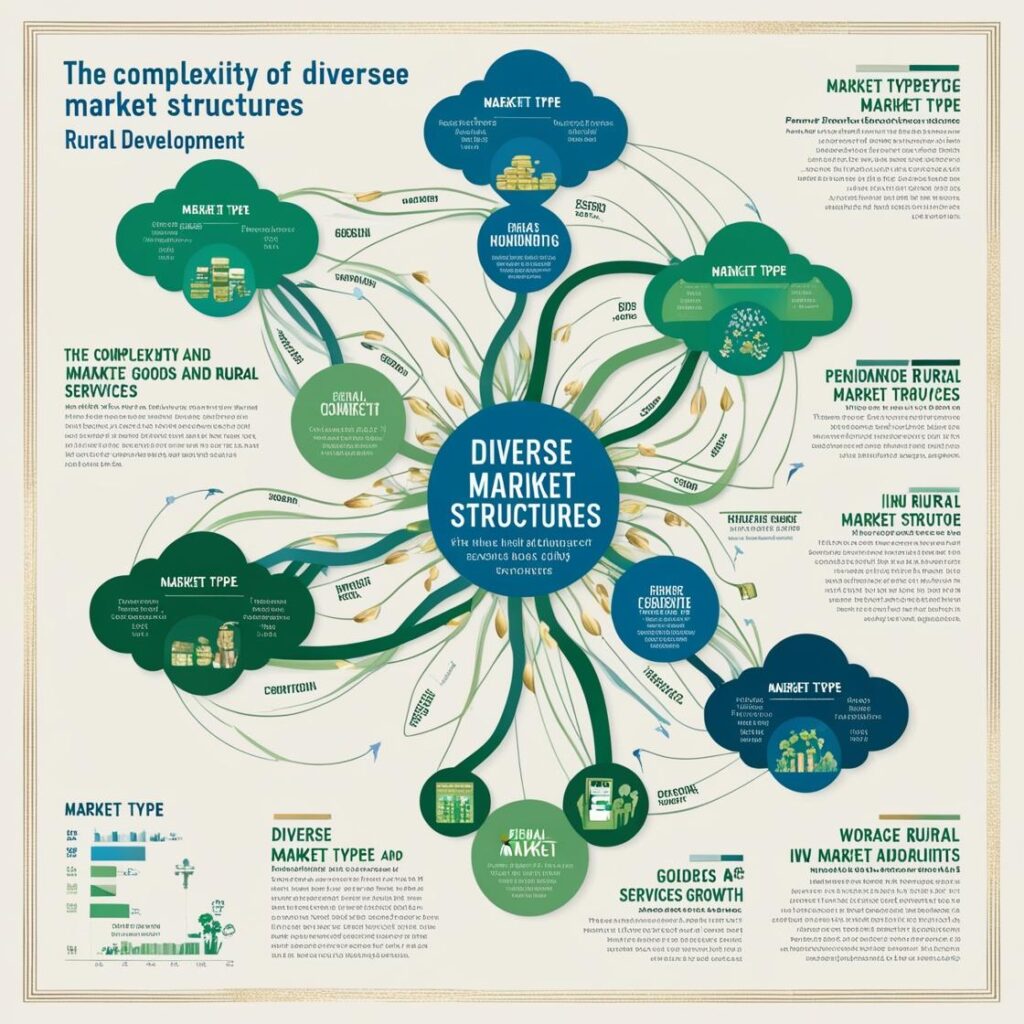
The text provides an argument against critiques of new, “nested markets” as being ineffective or overly limited in their scope. It defends the potential and relevance of such markets, even in the face of comparisons to larger, global markets. Here are some key points in the counter-arguments presented:
- Not a Simple Dichotomy: The author argues that new nested markets should not be seen as fundamentally opposed to global markets. Instead, they can coexist and even evolve into part of a larger system. For example, many farmers may choose to supply both nested and global markets as a risk reduction strategy, highlighting the flexibility and adaptability of nested markets.
- Capacity to Supply Large Cities: Contrary to the critique that small-scale nested markets cannot feed large metropolitan areas, historical and contemporary examples are provided. Markets like Les Halles in Paris or the Xin Fa Di market in Beijing have shown that well-organized, smallholder-based markets can effectively feed large populations.
- Potential for Expansion: While some claim that nested markets are small and will remain small, the text argues that they can expand significantly through interlinked networks of markets. Examples like the street markets in the Netherlands demonstrate that numerous interconnected markets can collectively have a significant economic impact.
- Localism and Parochialism: The critique of nested markets as being parochial or limited to narrow, local contexts (termed “campanilismo”) is addressed by pointing to networks like the Ecovida circuit in Brazil. These networks connect multiple local markets, allowing products to travel long distances while maintaining their identity, thus proving that nested markets can operate beyond narrow local boundaries.
- Structural Holes and Market Construction: The concept of “structural holes” is introduced to show how new markets can be established to bridge gaps where connections are lacking in the current system. Historical and contemporary examples illustrate how the absence of relations can be strategically addressed to create new economic opportunities.
- Political and Social Relevance: The text underscores the political and social significance of constructing new markets. These markets challenge the dominant economic models and demonstrate that alternatives are viable. Engaging in the creation of new markets is not just an economic act, but a form of resistance and empowerment.
- Integration of New Technologies and Communication: The growth of nested markets is also facilitated by new technologies and communication methods, which help maintain relationships over large distances and support their expansion.
The overall counter-argument emphasizes that nested markets are neither inherently small nor destined to fail. With proper organization and networks, they can expand and effectively meet the needs of large populations, all while maintaining their distinct characteristics and social relevance.
Understanding the Roots of Exploitation and Nurture in Agriculture
Introduction: The Battle Between Exploitation and Nurture
In the world of agriculture, the tug-of-war between exploitation and nurture is not new. It’s a narrative as old as civilization itself, dictating how societies treat their land, resources, and people. Whether it’s turning fertile lands into overworked fields or harnessing nature’s bounty responsibly, the choices made reflect larger ideologies that impact everything—from food security to cultural values.
This article sheds light on how these opposing mindsets—exploitation and nurture—have evolved over time and continue to influence modern agriculture. The text uses historical perspectives and contemporary examples to make a compelling case for why nurturing our land and communities is vital for sustainable development.
The Historical Context: How Exploitation Became the Norm
The notion of land exploitation traces back to colonial times, where imperial powers pursued industrial economies that prioritized short-term gains over long-term sustainability. As noted in history, while the French crown sought to develop New France agriculturally, the lure of the lucrative fur trade proved too tempting. This focus on immediate profit led to policies that undermined agricultural development, making it an afterthought to the extraction of resources like fur and fish.
The story of Louisiana offers another telling example. Explorer La Salle’s vision of agricultural prosperity for the region was overshadowed by the French court’s interest in using the area as a strategic launchpad to access Mexico’s silver mines. This illustrates how political agendas often override what’s best for the land and its people—a trend that continues to this day.
Exploitation vs. Nurture: Defining the Two Mindsets
Let’s break down these two mindsets, each with its own unique set of values and outcomes:
- The Exploiter’s Mindset:
- Seeks efficiency and profit.
- Treats land as a resource to be maximized, asking, “How much can I get from this land, and how quickly?”
- Operates within a rigid system, serving institutions and organizations rather than communities or nature.
- Measures success through numbers and quantities, often ignoring the environmental cost.
- The Nurturer’s Mindset:
- Prioritizes the health and longevity of land and community.
- Asks more nuanced questions: “What is the land’s capacity? How can we sustain its productivity indefinitely?”
- Works with nature’s rhythms, embodying a holistic approach that balances productivity with care.
- Values quality, character, and the health of land, animals, and people over raw efficiency.
Real-World Implications of These Mindsets
The tension between these two ideologies isn’t just a philosophical debate; it has real consequences. When the exploiter’s mindset prevails, we see:
- Depletion of Natural Resources: Soils become compacted and lose their natural fertility. Overuse of chemical fertilizers and pesticides makes land dependent on these inputs, reducing its natural resilience.
- Environmental and Social Breakdown: As the land degrades, rural communities suffer, and farmers find it harder to sustain their livelihoods. Many are forced out, leaving behind land that corporations eagerly consolidate.
- Increased Mechanization and Costs: As land quality deteriorates, more resources are poured into making it productive—bigger machines, more chemicals—leading to a vicious cycle of higher costs and diminished returns.
Meanwhile, a nurturing mindset fosters:
- Sustainable Land Management: Techniques like crop rotation, conservation tillage, and organic farming improve soil health and biodiversity, ensuring that land remains productive for future generations.
- Community Resilience: Stronger, healthier communities that are better equipped to weather economic and environmental shifts.
- Balanced Output: Instead of depleting land for maximum immediate yield, nurturers focus on maintaining steady, reliable production that doesn’t compromise long-term health.
Lessons for Modern Agriculture: Finding Balance
The agricultural landscape today, much like in the past, faces a crisis of values. Industrial agriculture’s relentless push for increased production has led to practices that mirror historical exploitation—treating food as a weapon, land as fuel, and people as replaceable cogs.
Yet, it doesn’t have to be this way. Here are some actionable tips and strategies that can help shift the balance:
- Implement Conservation Agriculture: Techniques like no-till farming, cover cropping, and diversified planting maintain soil health and reduce erosion.
- Encourage Local and Organic Food Systems: Support local farmers and organic practices that promote ecological balance.
- Promote Crop Rotation and Diversification: These practices prevent soil depletion and reduce the need for chemical inputs.
- Adopt Sustainable Water Management: Efficient irrigation systems, water conservation strategies, and watershed management can protect against water scarcity.
- Engage Communities in Agricultural Decisions: Empowering local farmers and community members leads to better stewardship of the land and more resilient agricultural systems.
Conclusion: Moving Toward a Sustainable Future
The future of agriculture hinges on our ability to choose nurture over exploitation. This means valuing the long-term health of our land and communities over short-term profits. It’s about creating systems that work with nature, rather than against it.
Here’s a quick summary to keep in mind:
- Understand the impact of exploitative practices: Short-term gains can lead to long-term losses for both the land and communities.
- Adopt nurturing agricultural methods: Sustainable farming techniques can maintain productivity and support ecological balance.
- Resist the corporatization of agriculture: Prioritize local food systems, community engagement, and fair land use policies.
By choosing to nurture rather than exploit, we ensure that agriculture remains a source of life, nourishment, and stability for generations to come.
What caused these divisions? There are no doubt many causes, complex both in themselves and in their interaction. But pertinent to all of them, I think, is our attitude toward work. The growth of the exploiters’ revolution on this continent has been accompanied by the growth of the idea that work is beneath human dignity, particularly any form of hand work. We have made it our over- riding ambition to escape work, and as a consequence have debased work until it is only fit to escape from. We have debased the products of work and have been, in turn, debased by them. Out of this contempt for work arose the idea of a nigger: at first some person, and later some thing, to be used to relieve us of the burden of work. If we began by making niggers of people, we have ended by making a nigger of the world. We have taken the irreplaceable energies and materials of the world and turned them into jimcrack “labor-saving devices.” We have made of the rivers and oceans and winds niggers to carry away our refuse, which we think we are too good to dispose of decently ourselves. And in doing this to the world that is our common heritage and bond, we have returned to making niggers of people: we have become each other’s niggers. But is work something that we have a right to escape? And can we escape it with impunity? We are probably the first entire people ever to think so. All the unsettling of america 15 the ancient wisdom that has come down to us counsels otherwise. It tells us that work is necessary to us, as much a part of our condition as mortality; that good work is our salvation and our joy; that shoddy or dishonest or self-serving work is our curse and our doom. We have tried to escape the sweat and sorrow promised in Genesis—only to find that, in order to do so, we must forswear love and excellence, health and joy. Thus we can see growing out of our history a condition that is physically dangerous, morally repugnant, ugly. Contrary to the blandishments of the salesmen, it is not particularly comfortable or happy. It is not even affluent in any meaningful sense, because its abundance is dependent on sources that are being rapidly exhausted by its methods. To see these things is to come up against the question: Then what is desirable? One possibility is just to tag along with the fantasists in government and industry who would have us believe that we can pursue our ideals of affluence, comfort, mobility, and leisure indefinitely. This curious faith is predicated on the notion that we will soon develop unlimited new sources of energy: domestic oil fields, shale oil, gasified coal, nuclear power, solar energy, and so on. This is fantastical because the basic cause of the energy crisis is not scarcity; it is moral ignorance and weakness of character. We don’t know how to use energy, or what to use it for. And we cannot restrain ourselves. Our time is characterized as much by the abuse and waste of human energy as it is by the abuse and waste of fossil fuel energy. Nuclear power, if we are to believe its advocates, is presumably going to be well used by the same mentality that has egregiously devalued and misapplied man- and womanpower. If we had an unlimited supply of solar or wind power, we would use that destructively, too, for the same reasons. Perhaps all of those sources of energy are going to be developed. Perhaps all of them can sooner or later be developed without threatening our survival. But not all of them together can guarantee our survival, and they cannot define what is desirable. We will not find those answers in Washington, D.C., or in the laboratories of oil companies. In order to find them, we will have to look closer to ourselves. I believe that the answers are to be found in our history: in its until now subordinate tendency of settlement, of domestic permanence. This was the 16 the unsettling of america ambition of thousands of immigrants; it is formulated eloquently in some of the letters of Thomas Jefferson; it was the dream of the freed slaves; it was writ- ten into law in the Homestead Act of 1862. There are few of us whose families have not at some time been moved to see its vision and to attempt to enact its possibility. I am talking about the idea that as many as possible should share in the ownership of the land and thus be bound to it by economic interest, by the investment of love and work, by family loyalty, by memory and tradition. How much land this should be is a question, and the answer will vary with geography. The Homestead Act said 160 acres. The freedmen of the 1860s hoped for forty. We know that, particularly in other countries, families have lived decently on far fewer acres than that. The old idea is still full of promise. It is potent with healing and with health. It has the power to turn each person away from the big-time promising and planning of the government, to confront in himself, in the immediacy of his own circumstances and whereabouts, the question of what methods and ways are best. It proposes an economy of necessities rather than an economy based upon anxiety, fantasy, luxury, and idle wishing. It proposes the independent, free-standing citizenry that Jefferson thought to be the surest safeguard of democratic liberty. And perhaps most important of all, it proposes an agri- culture based upon intensive work, local energies, care, and long-living communities—that is, to state the matter from a consumer’s point of view: a dependable, long-term food supply. This is a possibility that is obviously imperiled—by antipathy in high places, by adverse public fashions and attitudes, by the deterioration of our present farm communities and traditions, by the flawed education and the inexperi- ence of our young people. Yet it alone can promise us the continuity of attention and devotion without which the human life of the earth is impossible. Sixty years ago, in another time of crisis, Thomas Hardy wrote these stanzas: Only a man harrowing clods In a slow silent walk With an old horse that stumbles and nods Half asleep as they stalk. the unsettling of america 17 Only thin smoke without flame From the heaps of couch-grass; Yet this will go onward the same Though Dynasties pass. Today most of our people are so conditioned that they do not wish to harrow clods either with an old horse or with a new tractor. Yet Hardy’s vision has come to be more urgently true than ever. The great difference these sixty years have made is that, though we feel that this work must go onward, we are not so certain that it will. But the care of the earth is our most ancient and most worthy and, after all, our most pleasing responsibility. To cherish what remains of it, and to foster its renewal, is our only legitimate hope.
This passage critiques the cultural and moral degradation of work and the land in America, attributing these issues to the belief that labor—especially manual labor—is beneath human dignity. This notion has led to a historical and ongoing separation from the very work that sustains communities and the environment.
Key Points and Analysis:
- Devaluation of Work:
- The author argues that Americans have developed an aversion to work, seeing it as something to escape. This attitude has led to the debasement of work and its outcomes, both economically and socially. By treating work as something undesirable, people have lost the intrinsic value associated with honest labor.
- The “Nigger” Concept:
- The term “nigger” is used metaphorically to describe how society has created something or someone to shoulder the burden of labor—first through slavery and then through mechanization and exploitation of natural resources. This concept has extended beyond racial subjugation to encompass the exploitation of land and resources, making them into mere tools to serve human convenience.
- Impact on Environment and Energy Use:
- The passage suggests that humanity’s disdain for work and the environment has led to irresponsible and destructive use of energy. Even if alternative energy sources like nuclear or solar power become feasible, they will be misused in the same exploitative manner unless there is a fundamental change in attitude towards work and consumption.
- Historical Context and the Idea of Settlement:
- The author looks back to American history, invoking figures like Thomas Jefferson and the Homestead Act of 1862, to remind readers of an earlier vision of land ownership and stewardship. The goal was a society where families worked the land they owned, ensuring a sustainable and invested relationship with the environment.
- Solution in the Tradition of Settlement:
- The author advocates for a return to a more grounded and settled way of life, where families are closely tied to the land and committed to its care. This ideal stands in stark contrast to modern trends of detachment from both labor and land, which have led to environmental and social degradation.
- Call to Action:
- The conclusion asserts that humanity’s primary and most noble responsibility is the care of the earth. True fulfillment and continuity can only be achieved by cherishing the environment and promoting its renewal. The poem by Thomas Hardy is invoked to underscore the timeless nature of this relationship and the enduring necessity of careful, patient stewardship of the land.
Broader Context:
The passage likely reflects themes from Wendell Berry’s work, which often critiques modern industrial society and advocates for agrarianism—a philosophy that values sustainable agriculture, community-oriented living, and a deep connection to the land. Berry argues that the loss of connection to meaningful work and the natural world has led to a fractured society, and only by reclaiming these connections can we find true health and sustainability.
The passage ties together historical, economic, and moral arguments to make a case for reevaluating society’s relationship with work, energy, and the land. It calls for a return to a more grounded, sustainable way of living that respects both the dignity of labor and the integrity of the environment.
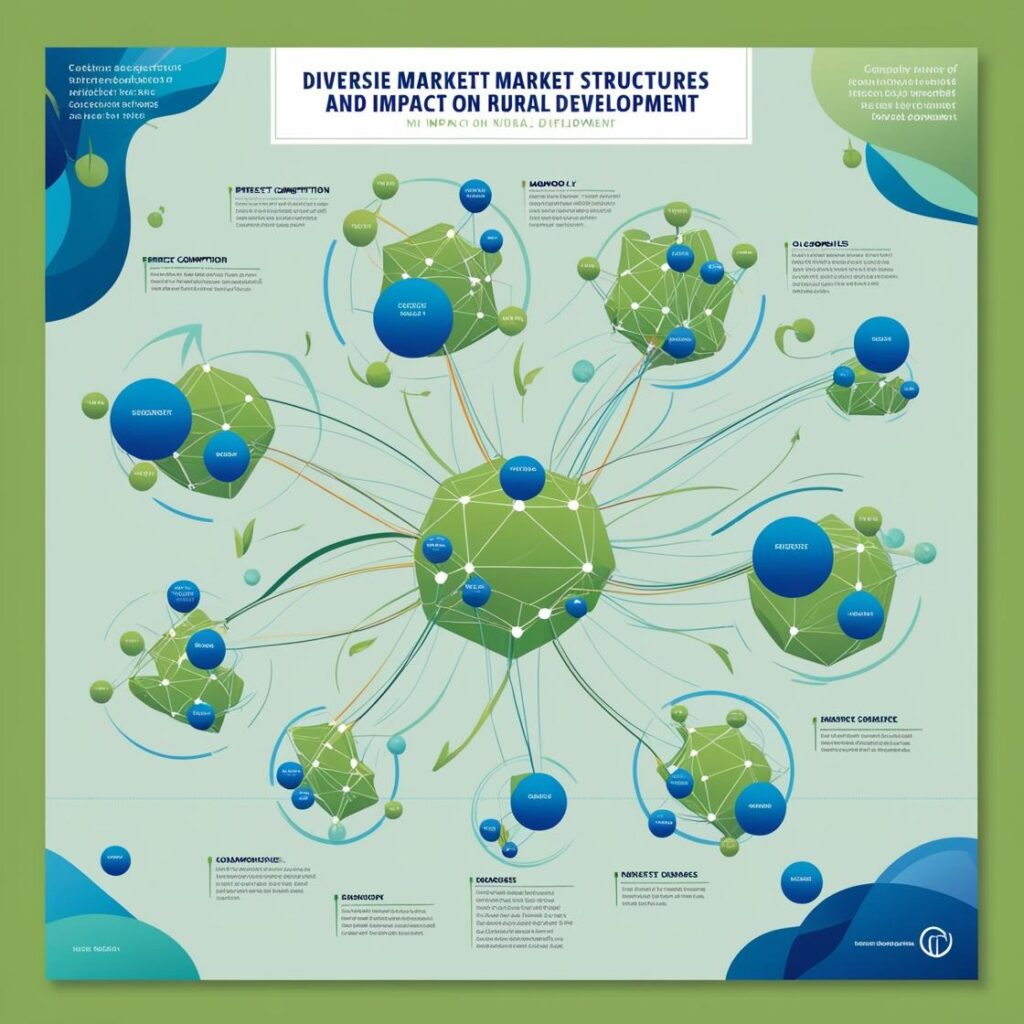
About Us
Welcome to Agriculture Novel, your go-to source for in-depth information and insights into the world of agriculture, hydroponics, and sustainable farming. Our mission is to educate, inspire, and empower a new generation of farmers, hobbyists, and eco-conscious enthusiasts. Whether you’re interested in traditional farming practices or modern innovations, we aim to provide comprehensive guides, expert tips, and the latest updates in agriculture and urban farming.
At Agriculture Novel, we believe in the power of knowledge to transform the way we grow, sustain, and nourish our world. Explore our articles on topics like Fruit Growing Guide, Hydroponics, Plant Deficiency Guide, and more.
Thank you for joining us on this journey towards a greener, more sustainable future!
About Agronique Horizon
At Agronique Horizon, we specialize in delivering comprehensive digital marketing and web development solutions tailored for the agriculture and hydroponics industries. From custom website design and app development to social media management, we provide end-to-end support for brands aiming to make a meaningful impact. Our team also offers innovative solutions for the real estate sector, bringing precision and visibility to your projects. Learn more about our services here and discover how we can elevate your digital presence.

